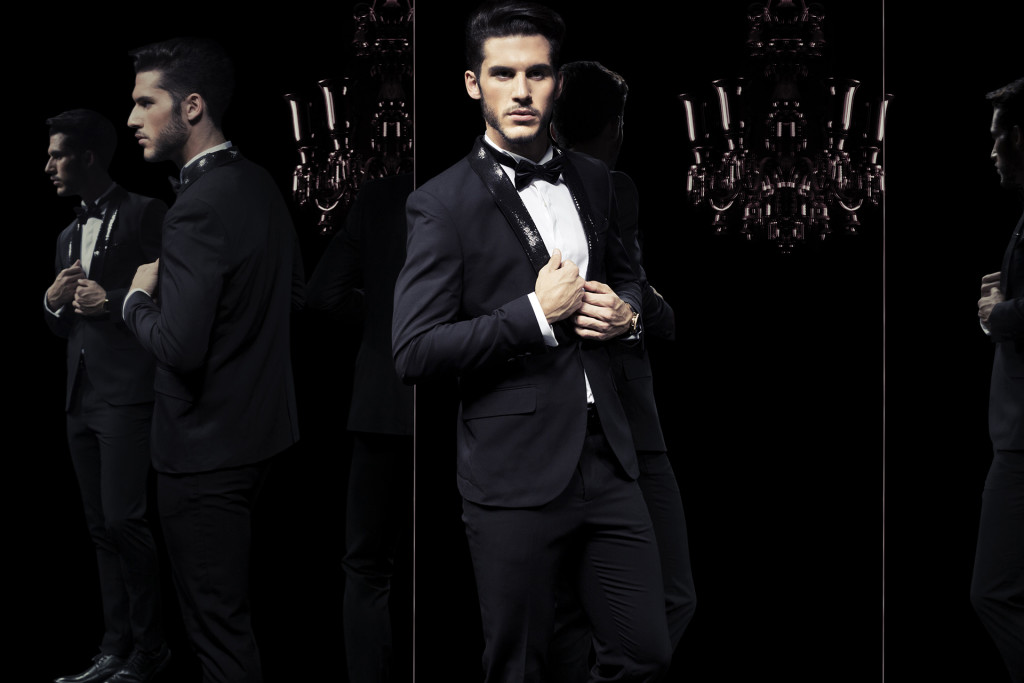Manners might maketh a man, but Rebekah Kendal says a well-tailored tuxedo can make a man look great
If James Bond has taught us anything, it is that Martinis should always be shaken not stirred, villains do have lairs, and a well-tailored tux renders a man virtually irresistible. Perhaps not surprisingly, the first man of consequence to sport the dinner jacket – as the tuxedo is known in England – was reputedly something of a womaniser too.
In 1865, Prince Edward VII of England commissioned his tailor, Henry Poole & Co, to create a short celestial-blue evening coat that he could wear at more informal dinners at Sandringham. This garment, which was worn with matching trousers, was the blueprint for the dinner jacket. How the dinner jacket became known as the tuxedo, however, is up for debate.
The most credible theory is that the dinner jacket was taken to the US by a millionaire called James Brown Potter. When Potter and his wife Cora visited Britain in 1886, they were introduced to the Prince of Wales, who invited them to dinner at Sandringham. The prince sent Potter to Henry Poole & Co, who duly fitted him with a suitable jacket for the occasion. When Potter returned to America, he wore this shortened dinner jacket to a function at the private country club in Tuxedo Park, New York.
By the turn of the 20th century, everyone who was anyone possessed a tuxedo. These formal suits were made of a woollen woven fabric, with satin lapels. During this period, the original shawl collar gave way to the trendy peaked lapel, and the single-button model emerged as the standard. And in addition to black, fashionable young men also donned Oxford-grey or midnight-blue evening wear.
In the 1920s, notch lapels – imported from the ordinary business suit – enjoyed a brief stint of popularity, and the single- stripe braid covering the outseam on each leg was introduced. By 1935, mills were churning out more blue tuxedo wool than black, as midnight-blue tuxedos became all the rage. During this period, the double-breasted variation also made an appearance, and it became acceptable – especially in warmer climates – to wear a white tuxedo jacket with black trousers.
The Second World War ushered in a more austere, informal era, during which the tuxedo was relegated to the back of the cupboard, but, by the 1950s, it was back. The space-age influence could be seen in the introduction of new fabrics such as polyester, shirt ruffles, and a shorter, more fitted jacket. The white-tie dress code had been abandoned in all but the poshest circles, and black tie became the dress code for weddings and high-society events.
The tuxedo became barely recognisable in the 1970s: ruffles abounded, jackets were brightly coloured, and trousers took on the silhouette of bell-bottoms. Sanity prevailed in the decade that followed and more classic styling returned. Notched lapels that had previously enjoyed a surge of popularity in the 1920s were back, and, as the tux moved into the 1990s, it took on other traits of the business suit – two- or three-button styling, flap pockets and centre vents.
At the start of the 21st century, the tuxedo was ditched in favour of smart black suits and matching ties, but recent years have seen the tuxedo making a comeback. According to Ziyaad Nanabhay, owner of Cavalier, modern tuxedos tend to be slimmer and more tapered for a fresher look.
‘The classic black tux is still preferred,’ points out Nanabhay. ‘However, we have seen an increase in dark blue as well as patterned tuxedos. The most common lapels are still the classic shawl lapel and peak lapel.’
George Diab of Tailor Me points out that the tuxedo is a powerful weapon in a man’s clothing arsenal. ‘People have been breaking the norm in terms of design – we have seen a significant shift in men’s fashion,’ explains Diab. ‘Men are going for more bold and outstanding colours, from burgundy and blue to beige and black. In terms of cut, men want suits that are well-fitted to the body and give that silhouetted look. The traditional lapel on a tuxedo is a shawl lapel; however, peak lapels have become an increasingly popular feature on the tuxedo, even though they do provide a more formal look.’
Both Diab and Nanabhay suggest that this resurgence in the popularity of men’s formalwear can be tied to a return to the ‘way of the gentleman’.
‘Men now desire three-piece suits of a modern cut, but classic in style,’ explains Nanabhay. ‘The tuxedo is still considered a classic. Tuxedos are used specifically for black-tie occasions, where they convey upon the wearer an element of dapperness that is superior to most suits. The rules of style dictate that tuxedos be worn for ultra-formal occasions only – which does bring into question their versatility – but we believe a gentleman’s wardrobe is not fully complete without a bespoke tux crafted from a high-quality cloth.’
And though we suspect the spy with a licence to kill would agree, we’re not about to quibble with him. Let’s leave that to the men with the lairs.
photography: GALLO/GETTYIMAGES

